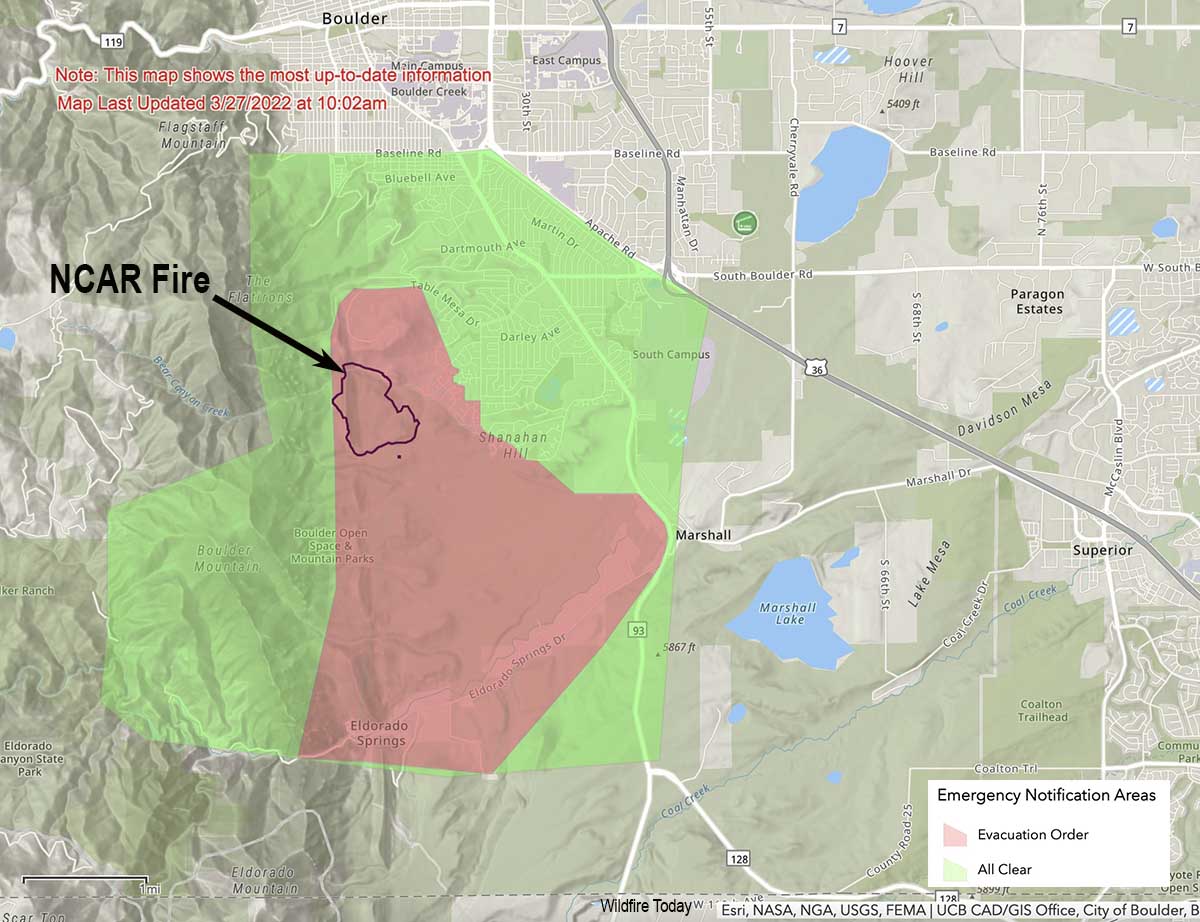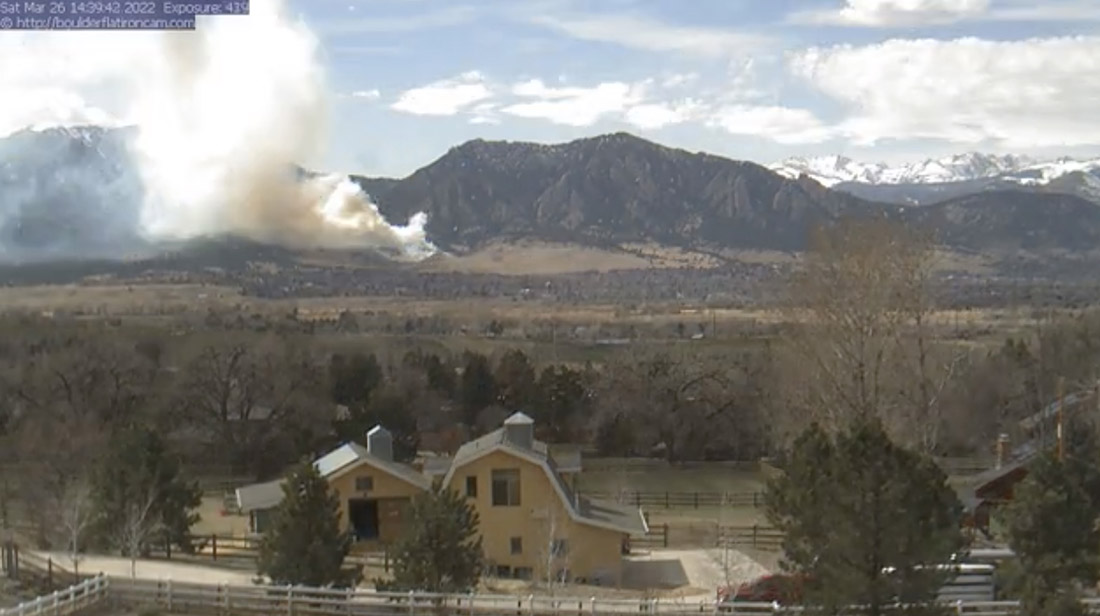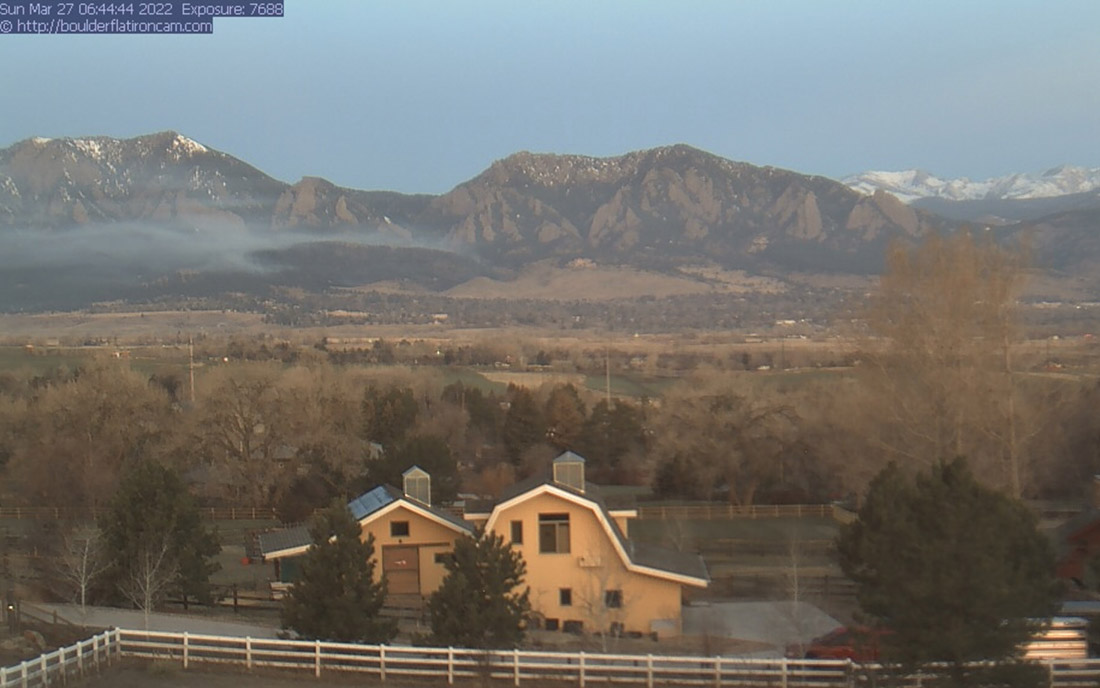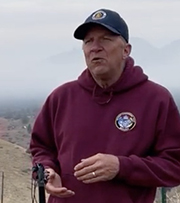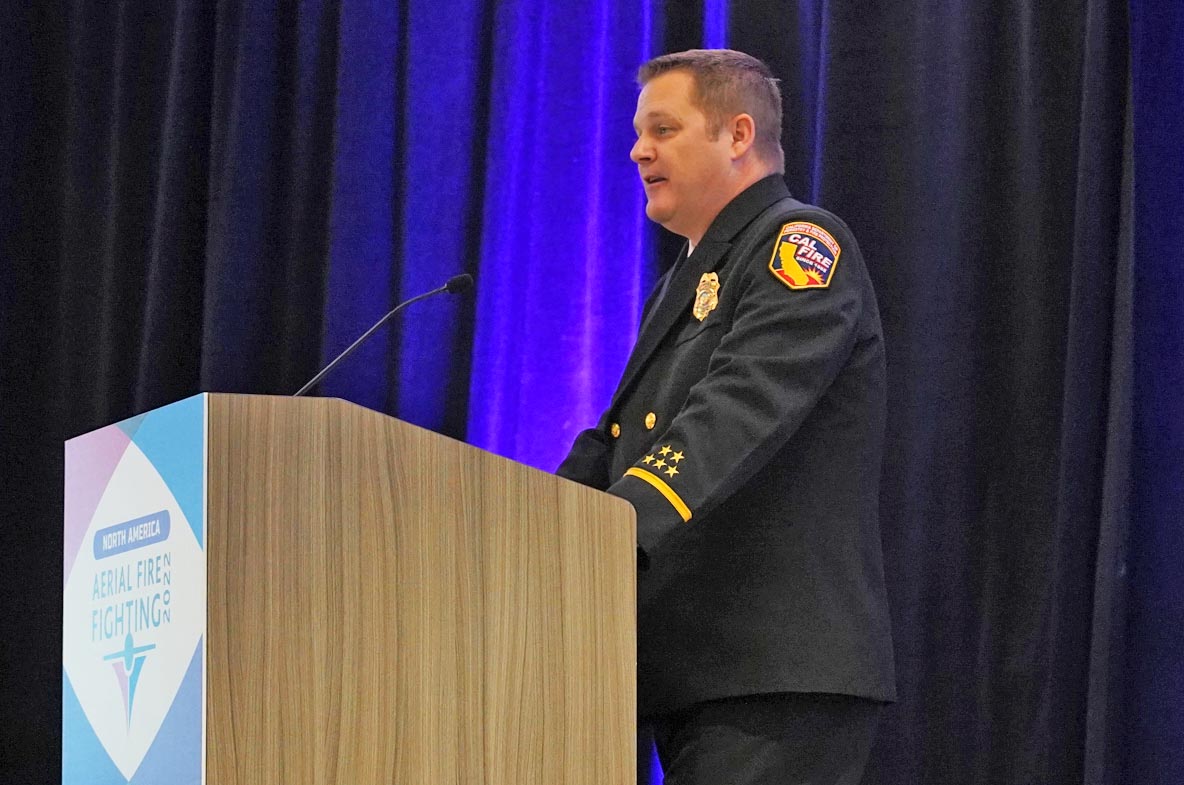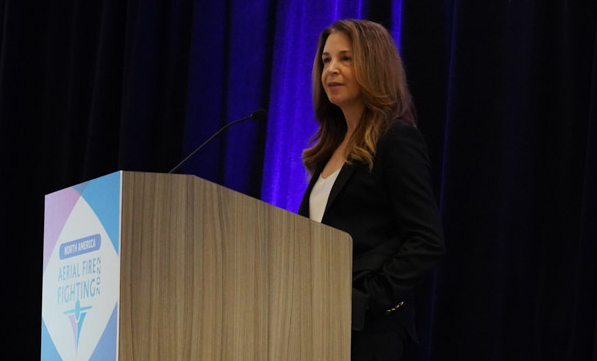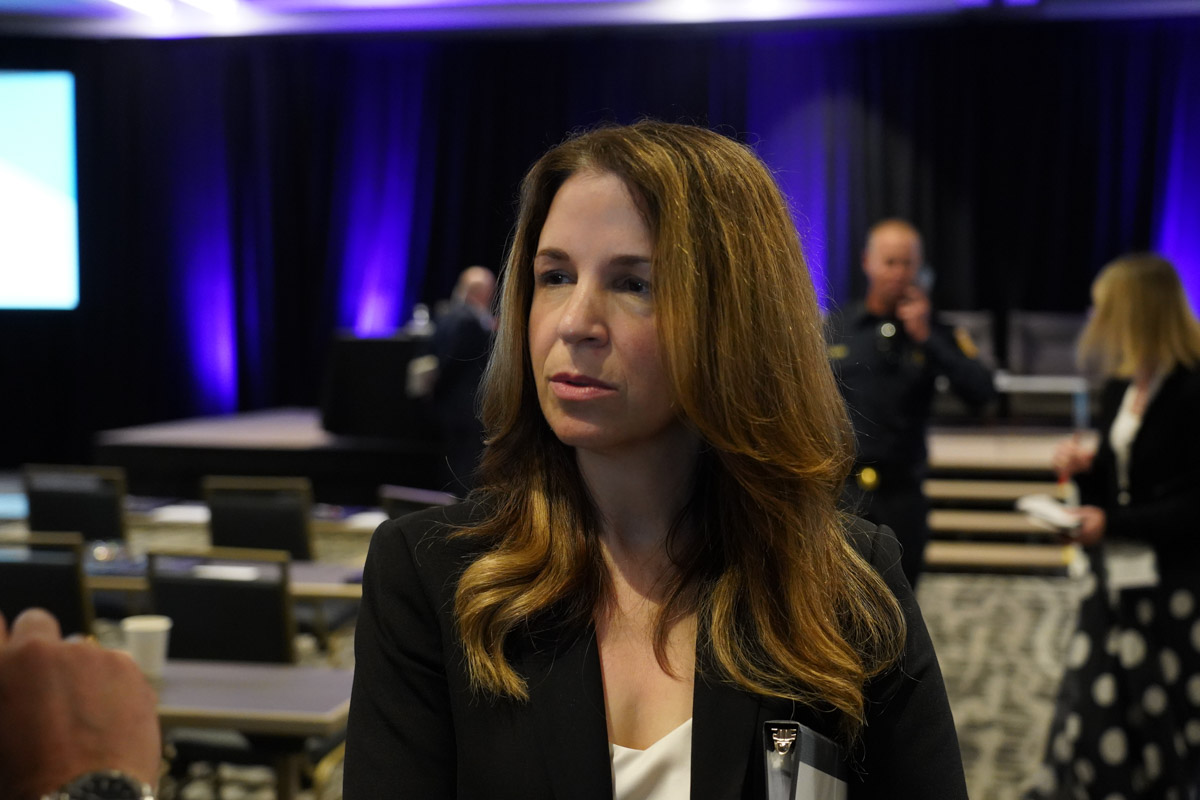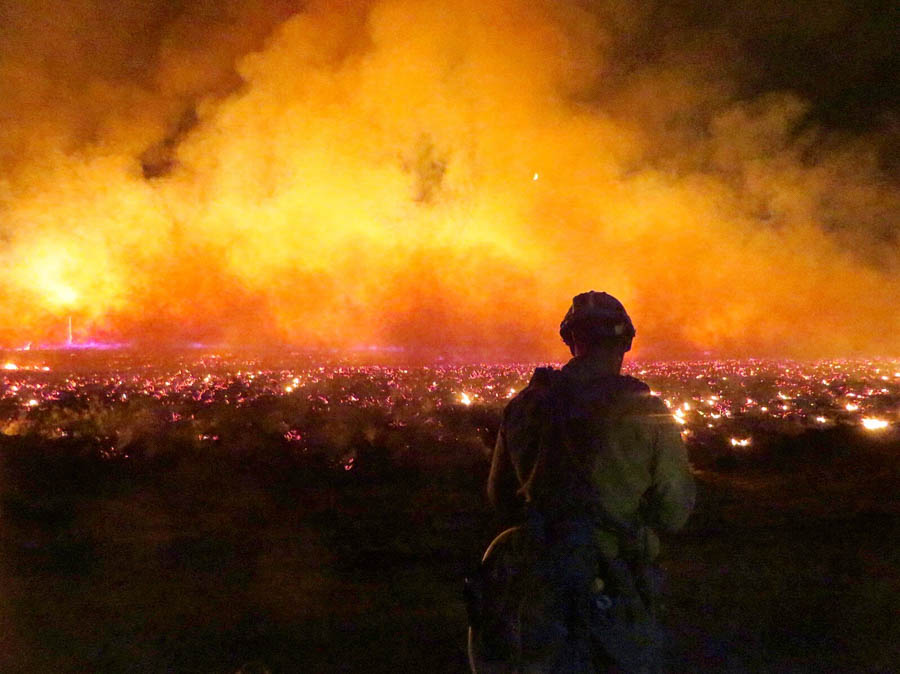Heliskid
Last week at the Aerial Firefighting conference in San Diego a company from Spain was displaying a small version of a transportable pump/tank combination. It reminded me of the Klump Pump which has been around for decades. More about that later, but let’s take a look at the unit made by the Spanish company, Vallfirest. They have at least two models — the one in Europe is sized to fit into compact pickup trucks that are common in those countries. The United States’ variety is larger and holds about 1,000 gallons. Scott Reimann, their representative at the San Diego meeting, said it will fit into a half- or three-quarter ton truck, or it can be flown in by helicopter.
The clever feature of the Heliskid is that it can be removed from a pickup truck by attaching the legs which extend out beyond the sides of the truck, jacking the unit up, and then driving the truck out from under it.
Without water, it weighs 750 pounds.
Fire Aviation produced the video above, which was filmed last week at the Aerial Firefighting conference in San Diego.
The video below is a product of the manufacturer, Vallfirest.
Klump Pump
The Klump Pump, also known as the Uni-Engine, is named after its inventor, Jim Klump. A former smokejumper and Type 1 Operations Section Chief, he recognized the need for a water delivery system during initial and extended attack in remote locations that could be set up quickly and was easy to operate. The basic components are similar, a 1,000-gallon tank and a pump. It can also be deployed by a helicopter, but will not fit in a pickup, however it comes with a trailer. It features a foam concentrate tank and a proportioner, unlike the Heliskid.
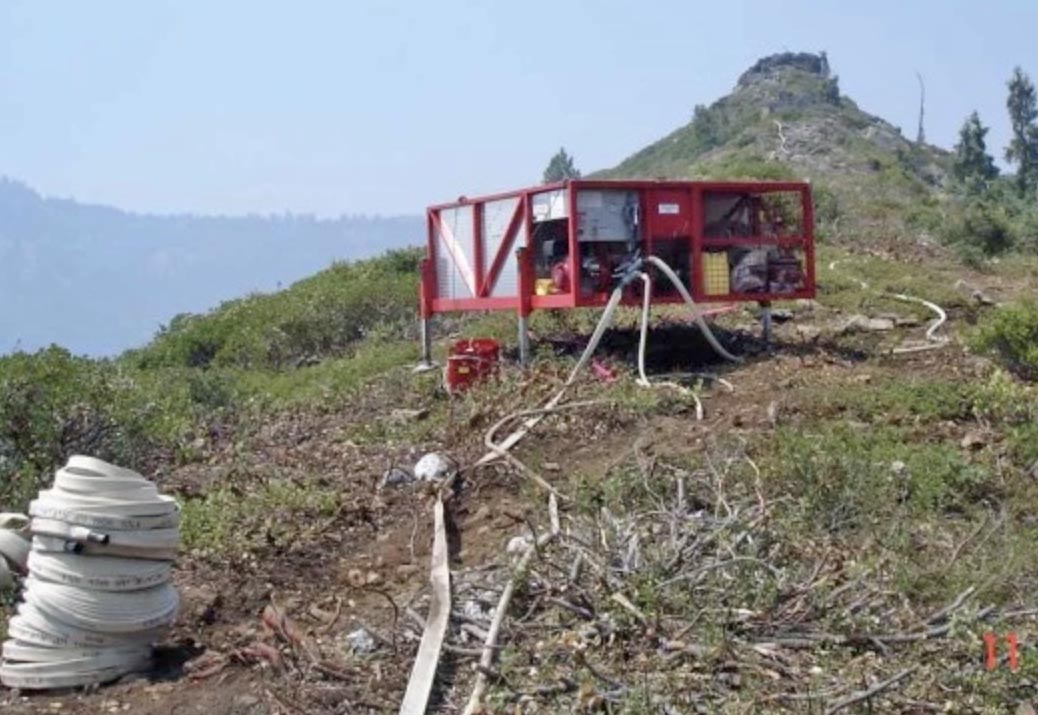
Mr. Klump sold the business in 2019 to Jerry Vice of High Sierra Fire, at which time the name was officially changed to “Klump Pump.” The new owner’s headquarters is in Janesville, California in Northeastern California, with a few of the units remaining in Central California for quicker deployment to southern areas.
The Klump Pump weighs 1,600 pounds empty.


